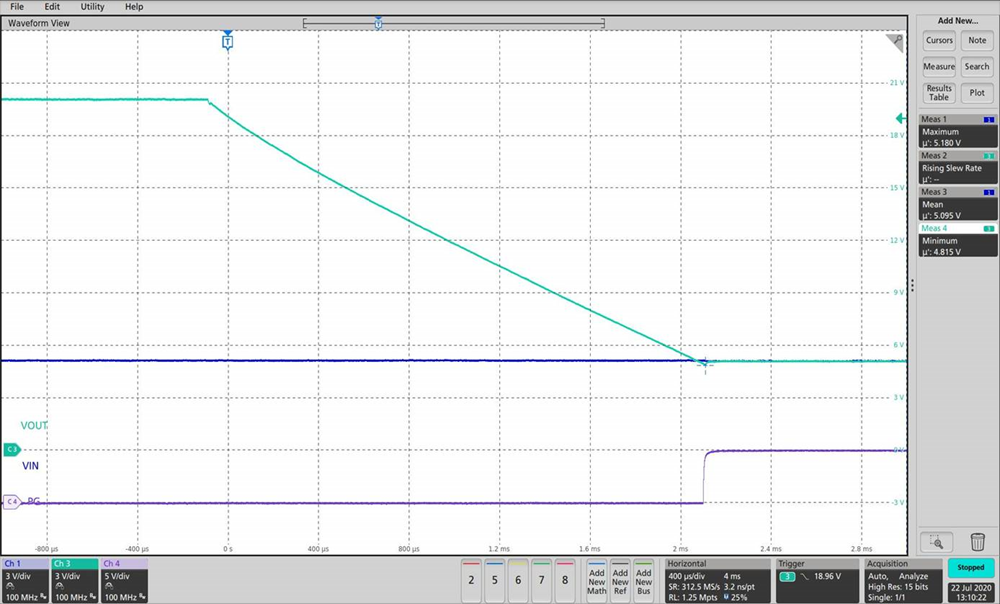SLVAEY2A August 2020 – October 2020 LM7310 , TPS25947
3 Fast Charging Enables FRS
In addition to voltage protections, TPS25947
uses fast charging to control inrush current to meet the FRS time requirement.
Conventionally, inrush current control is implemented with adjustable slew rate control.
By controlling the slew rate, efuse devices can prevent the initial voltage spike caused
by inrush current at startup. However, conventional adjustable slew rate control is too
slow for the FRS time requirements. By integrating a variable frequency charge pump and
internal control logic, TPS25947 is able to detect switching and quickly boost the
frequency to rapidly charge the gate of the FET.
 Figure 3-1 FRS Test
Figure 3-1 FRS Test
 Figure 3-1 FRS Test
Figure 3-1 FRS TestFor this test in Figure 3-1, Vout was initially supplied at 20 V by an external source, indicating that the end device is initially a power sink. Once the external supply is disconnected, Vout quickly drops and the end device switches to a power source to match a constant 5-V output. As shown by Figure 3-1, TPS25947 is able to FRS in ~30 µs.